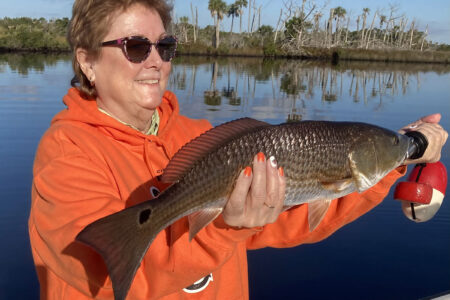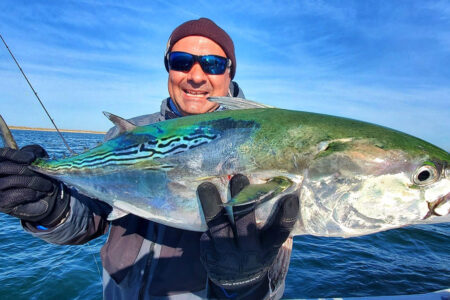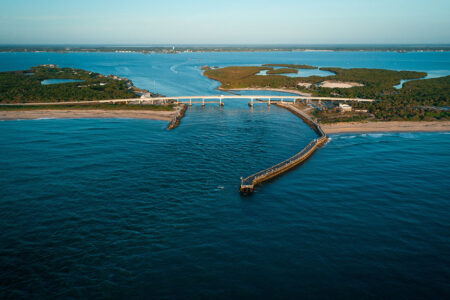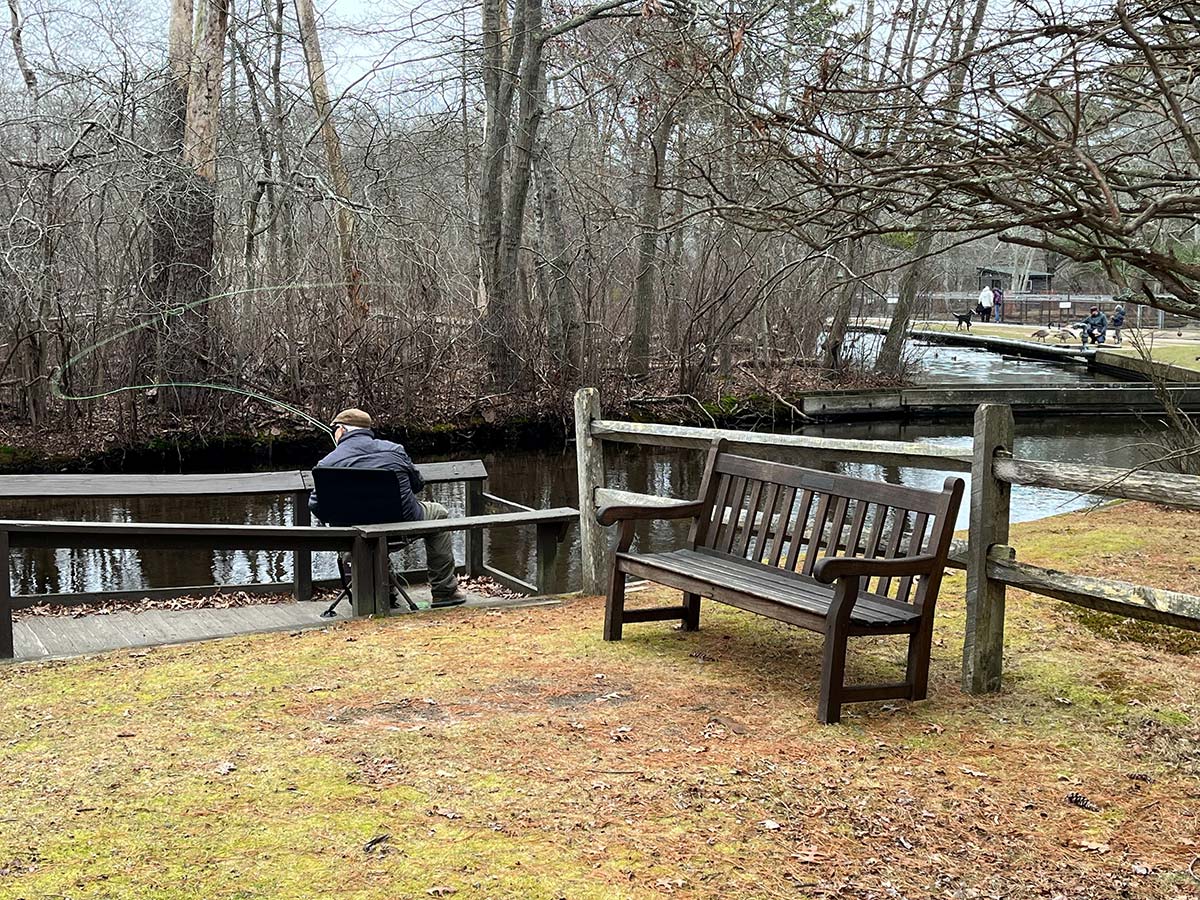
You’ll never forget it. It’s magical, and it happens here, on the Conny.
Did I catch you daydreaming? Perhaps about Striped Bass, bluefish, fishing for false albacore? Is your casting hand twitching, or are you alarmed it might just be atrophying? I know fishing options plummet on Long Island and the rest of the Northeast this time of year, and the symptoms of cabin fever start setting in. But you don’t have to let them. As that 70’s disco group the Village People sang, “There’s one place you can go” on Long Island, and it can easily be reached not just from there, but from the entire NJ, NY, and CT area to cure your ills, and in this instance, it’s not the YMCA.
Long Island Notoriety
It’s the Connetquot River, running through beautiful Connetquot River State Park in Oakdale, NY (about mid-Island), and it’s open to fishing year-round, which means the slower, cold months, and the fishing’s good. That’s right! Good fishing in the cabin fever time of the year. Quality fishing too, at a level that’s not just a substitute for your warm-weather endeavors.
I’ve been going there since 1983. The place, until the 70s, was a private club, Augie Vanderbuilt’s Idle Hour, until the property was donated to the state. I first became aware of it in a book published by Theodore Gordon called Flyfishers of NYC, which contained short descriptions of all the good trout fishing rivers in every state and Canada, continent-wide. The Connetquot was described as a “gem” and had 2 to 3 pounds of trout. Now, that caught my attention! The trout in the nearby streams I mostly fished, and was used to, were nine and 10-inch stockies, with a 14-incher being a big fish. I lived in and grew up in Port Chester, NY, and fished mostly streams in local Westchester County and adjacent Fairfield County, CT. Two and 3 pounds? And I’d never even heard of the place before either. “We gotta go there,” I exclaimed to my fishing buddy Pat Giordano over the phone. We went, and the place was beautiful! Such a pretty place with deer running around along with other wildlife scurrying around and birds flying all over, including some “showy” peacocks who would display their fanning of colorful feathers right in front of you. They’ve been gone for years now but it hasn’t dimmed the beauty of the park. Oh, and the trout? They were big!
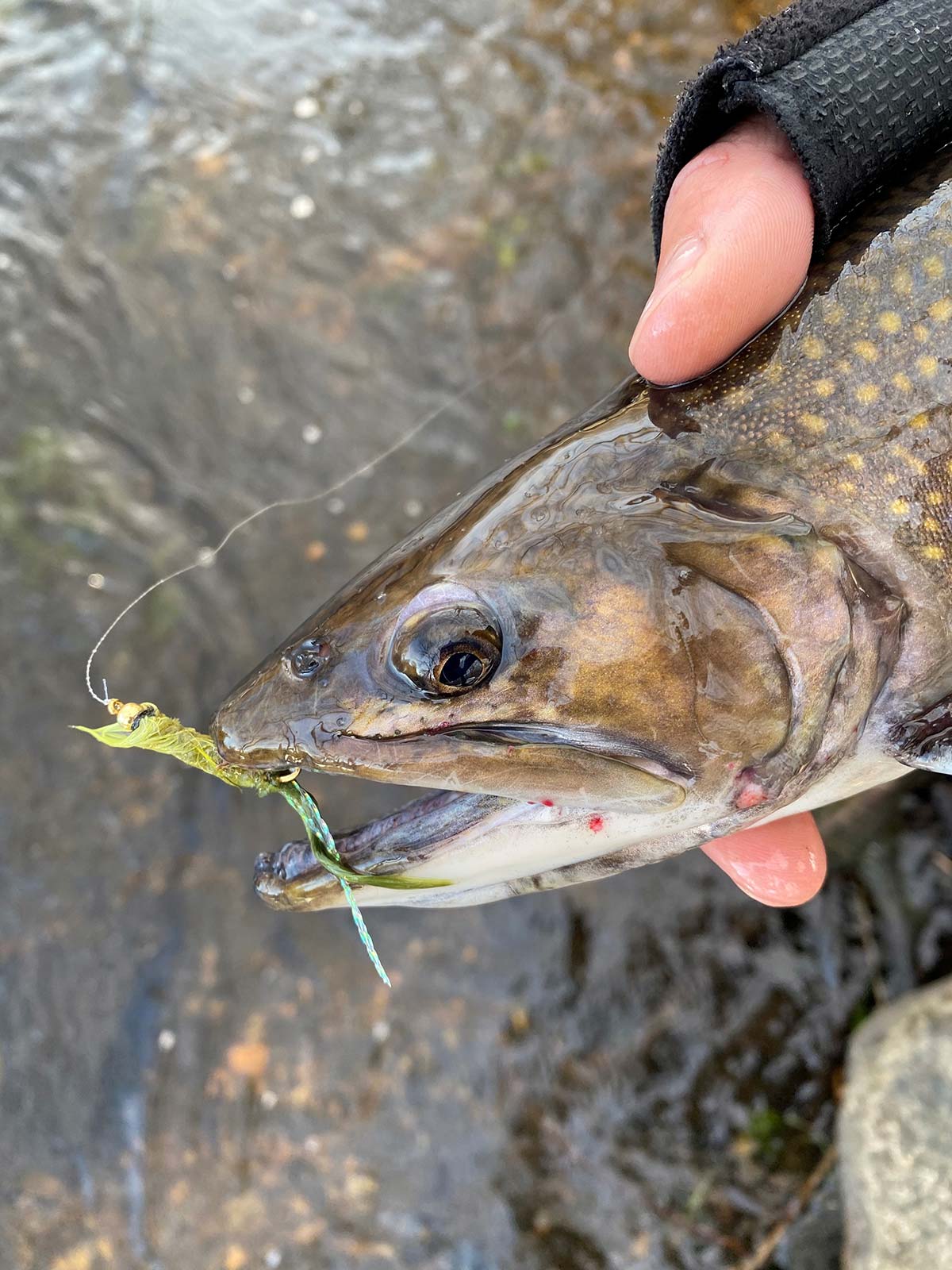
Quality And Monsters
We caught brook and brown trout, mostly 14 to 16 inches that day and left very happy anglers. Nowadays you commonly have brookies 12 to 17 or even 18 inches long and rainbow trout 14-17 inches with enough “bows” in the 19 to 22-inch range—pretty big fish. They don’t stock brown trout anymore. It used to be a great stream for big individuals of that species, containing a good number of 4 and 5-pounders. Some of these were sea runs (some rainbows, too), and occasionally someone would land a 10, 12, or 14-pound fish here. Even without stocking them during the last seven years or so, an angler caught a 14-pound brown in July three seasons ago. The largest I ever heard of caught here was 17 pounds. Although not quite as lucky, my biggest brown here is an 8-pounder, and the same day I got that, my friend Takashi netted a 30-inch, 10-pounder. My biggest rainbow was 10 pounds—caught recently—there are some considerable trout here.
| FLY SELECTION CHEAT SHEET |
| Tippets 5X – 3X, 6X for very small flies.
1.) Nymphs and egg flies Both of these flies catch plenty of fish here. Most common patterns: #12 – 18 Hares Ear, and Pheasant Tail nymphs #18 – 20 Black Zebra Nymphs #14 or 16 Scud, Freshwater Shrimp, Sow Bug, small egg – Glo Bug How to: Fish a short line using a strike indicator or none, whichever you prefer. Put a light split shot (non-lead) 6 to 8 inches up from the fly. Some anglers prefer fly 12, or 15 to 24 inches from the shot. Experimenting is the key to succeeding. Make sure you get a drag free drift. A trout sees a real nymph or egg moving along as though it’s attached to nothing. Copying the behavior of the natural it the key. 2.) Streamers Great baitfish Imitations—small patterns get the nod—good choices are the wooly bugger and weighted rabbit strip flies in white, florescent pink, black, olive, brown, or tan. I like a Rabbit Strip Jiggy which is just a rabbit (Zonker) strip tied on a hook with a tungsten weighted (bead or double cone) head. I give it lots of action to maximize its potential. As with nymphs, keep those streamers fishing down near and along the stream bottom. You catch many more fish using these flies near the bottom on the Connetquot. This is the same as you will fish them just about anywhere else as well. 3.) Dry Flies On warm days you may see some #20 blue winged olives on the “flat water” sections and fish rising to them. It’s the fish’s rises that’ll give the “hatch” away too. That is when you can catch them on dries. Also try a floating foam Chernoble Ant or Hopper, or a Gurgler. Pop it lightly and see what happens. Often enough you’ll get a rolling take. Even during the colder months. |
Geography And History
The Connetquot is a relatively narrow stream, a lot like a spring creek, but instead of the flow coming out of limestone, it comes out of the aquifer through the sand at the head of the park and flows through the preserve, emptying into Great South Bay on Long Island’s South Shore. It’s deeper in many places than an analogous freestone brook or small stream, which allows more room for trout to hide and thrive.
It’s a shame they don’t stock browns, not only because of the size they can attain but because of the river’s history. It’s North America’s first body of water where brown trout were introduced. The Baldwin River in Michigan is given credit for this, but that was the first public water the species was first placed in. The introduction at the Connetquot predated that in 1883 but took place in private water.
In Peter Kaminsky’s wonderful book A Moon Pulled Up An Acre of Bass, a fly-rodding chronicle about fishing the prodigious surfacing schools of stripers on their fall migration around Montauk Point, he states that the monster brook trout that Daniel Webster caught in 1824, which was considered the world record for that species for almost a century, wasn’t landed in the modern Carmans River, as was stated, but was caught in the Conny. Folks, this is a famous place; a historic one for trout in America!
A trout hatchery is located at the mid-point in the stream, so they don’t have to go far to stock the waterway, which they do often. The Connetquot is where you often see the trout, and when you do, you still have to remember that there are still many others nearby that you don’t see.
The stream is divided into “beats”—essentially designated fishing spaces about 150 feet long each, which run one after the other along the river’s length, and you “rent” one for $25 for four hours of fishing. You will need a valid NY State freshwater fishing license—they check it when you “sign up” before fishing. Fifteen beats lie above the hatchery and 17 below, there are 32 in all. There’s a footpath running along the streambank for all the beats. No wading is allowed above the hatchery, but these beats are still quite fishable, and they don’t stock much in this upper section either. Below the hatchery, wading is allowed, and they usually stock here plentifully. There are wild brook trout in the above section. Two sessions are offered per day in the winter; 8 a.m. to 12 p.m. and 12 p.m. to 4 p.m. During the warmer months, when light allows, they also extend to a third 4 p.m. to 8 p.m. session. The park is open Tuesdays through Sundays, and it’s closed Mondays. If you think four hours might not be enough time to catch fish, believe me, it is at this place. And for some reason, time appears to pass more slowly on the Connetquot.
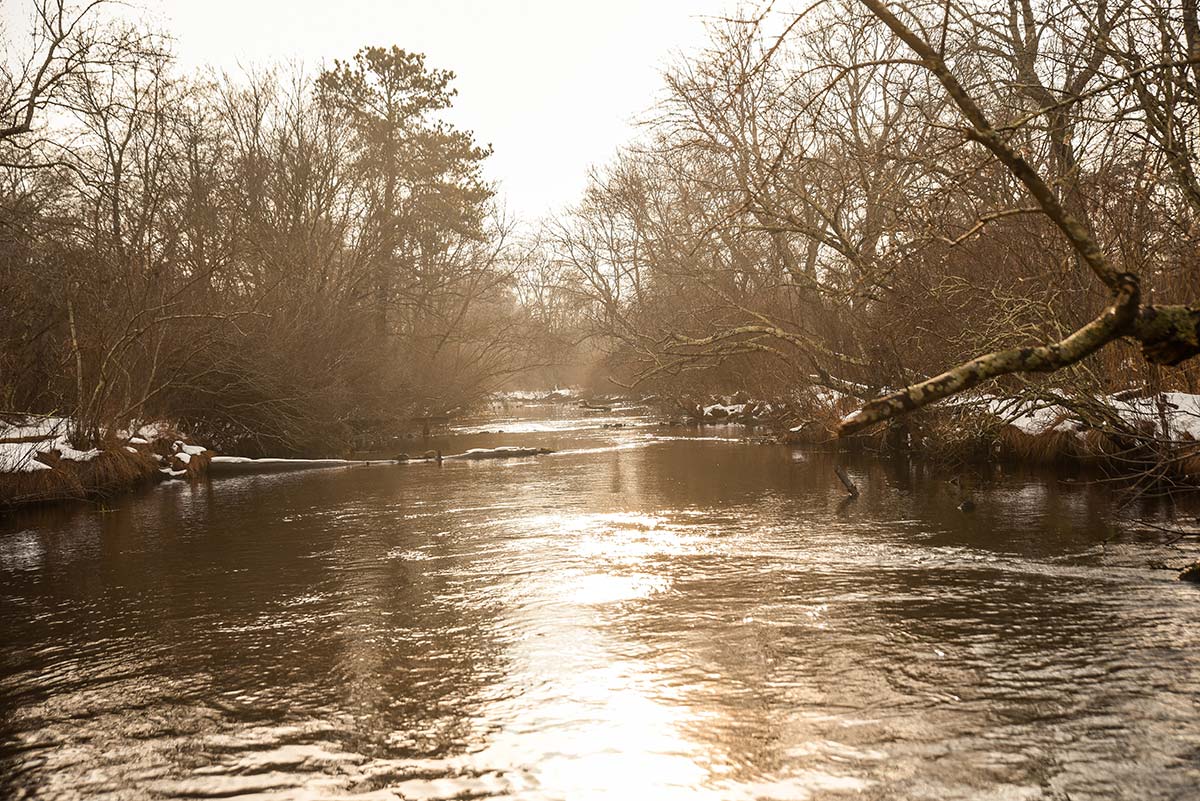
Fly Fishing Only
The fishing at Connetquot is fly fishing only, with only single hook barbless flies allowed (you can easily push the barb down with pliers on a barbed fly), and only one fly can be fished at a time. You must use fly tackle. Like famous signs along British “fly only” streams have conspicuously stated, “to Spin is to sin.” The same holds on this river.
As far as fly casting is concerned, you rarely have to make a long cast. The stream is so small that you’ll catch plenty of fish just roll casting, flipping your fly out, and short casting that you don’t have to worry much about casting skill.
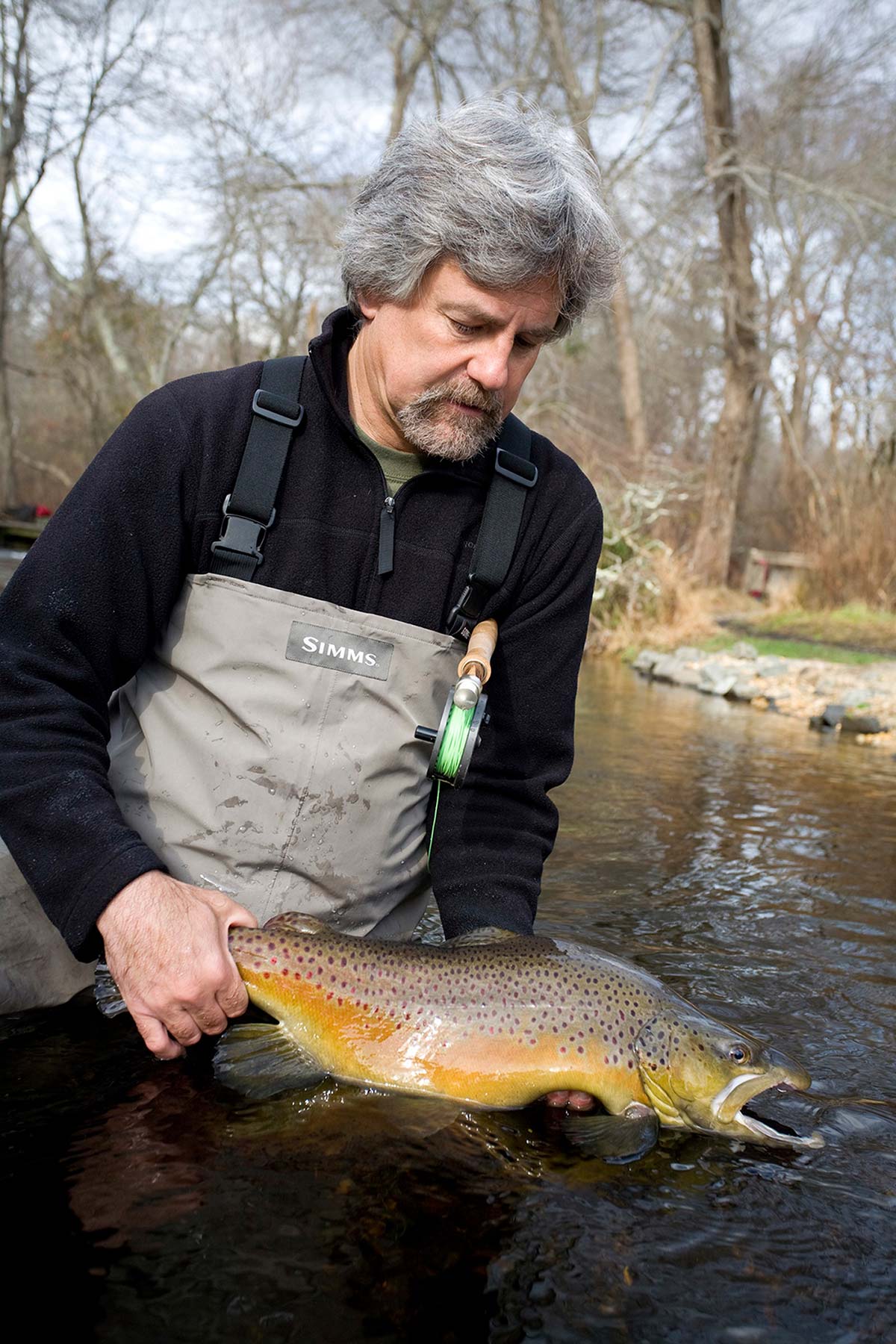
Only On The Conny
Enjoy the Park. It’s beautiful, even in winter or spring, with various trails, woods, and open spaces, a nice outdoor place in the middle of suburbia and close to NY City. This time of year, you may see numerous small winter wrens flying low across the stream, stopping to chatter in the bushes, or a cute golden-crowned kinglet coming down to get a sip of water, perhaps just a rod’s length away, apparently unaware of your presence.
Maybe the place will bring back fond memories, as it has for me, or if you haven’t been there, create them. Mine include walking stream paths quieted by the newly fallen snow, fishing along pristine white banks, having pictures taken holding big trout with snow on our shoulders, and hats caked with an inch or two of the same. Big smiles! And I’ll never forget, nor will you, the sight of a big beautiful rainbow trout majestically leaping two feet out of the water into the falling snow. Just ten feet away, it seems to just hang there at the top of its leap, that vivid pink band running along its side jumping right out at you, and all before a curtain of 1,000 big white flakes. You’ll never forget it. It’s magical, and it happens here, on the Conny.

